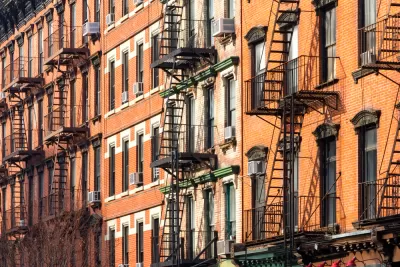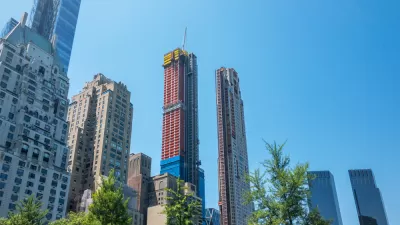The area could lose up to 500 units of affordable housing every year for the next 30 years if the city doesn't extend existing protections.

By 2040, affordability restrictions will expire for more than a fourth of all residential units in East Harlem, according to a new study by Regional Plan Association.
"A loss of regulated affordable housing of this magnitude would increase economic pressure on low and moderate-income residents," ultimately forcing many to leave, author Pierina Ana Sanchez warns in the abstract.
To prevent that outcome, the report proposes "requiring affordable housing created to guarantee affordability in perpetuity":
This can be done by restructuring existing programs, or supporting community and public ownership models including community land trusts, land lease agreements and expanded public housing … As urban areas become more attractive and new residents move in, there should be more efforts to shore up long-term residents’ ability to remain a part of the community.
It also locates opportunity in the Housing New York program, which will rezone the city to encourage residential development and to require inclusionary housing. Especially in gentrifying neighborhoods, those changes could create "a lab for the encouragement of inclusive and sustainable development."
The preservation of affordable housing is especially important to East Harlem and areas like it that have "historically welcomed people excluded by [overtly] discriminatory policies from living elsewhere," Sanchez notes:
Their displacement ultimately would be damaging for the city and for the entire region, which relies on having residents of diverse backgrounds, income levels and experiences to fill the range of jobs needed to make our economy function. And it would harm residents who would face leaving a community that is well connected to jobs, health care and education.
FULL STORY: Report: One-Fourth of East Harlem Units Could Lose Affordability Restrictions by 2040

Study: Maui’s Plan to Convert Vacation Rentals to Long-Term Housing Could Cause Nearly $1 Billion Economic Loss
The plan would reduce visitor accommodation by 25,% resulting in 1,900 jobs lost.

North Texas Transit Leaders Tout Benefits of TOD for Growing Region
At a summit focused on transit-oriented development, policymakers discussed how North Texas’ expanded light rail system can serve as a tool for economic growth.

Why Should We Subsidize Public Transportation?
Many public transit agencies face financial stress due to rising costs, declining fare revenue, and declining subsidies. Transit advocates must provide a strong business case for increasing public transit funding.

How to Make US Trains Faster
Changes to boarding platforms and a switch to electric trains could improve U.S. passenger rail service without the added cost of high-speed rail.

Columbia’s Revitalized ‘Loop’ Is a Hub for Local Entrepreneurs
A focus on small businesses is helping a commercial corridor in Columbia, Missouri thrive.

Invasive Insect Threatens Minnesota’s Ash Forests
The Emerald Ash Borer is a rapidly spreading invasive pest threatening Minnesota’s ash trees, and homeowners are encouraged to plant diverse replacement species, avoid moving ash firewood, and monitor for signs of infestation.
Urban Design for Planners 1: Software Tools
This six-course series explores essential urban design concepts using open source software and equips planners with the tools they need to participate fully in the urban design process.
Planning for Universal Design
Learn the tools for implementing Universal Design in planning regulations.
City of Santa Clarita
Ascent Environmental
Institute for Housing and Urban Development Studies (IHS)
City of Grandview
Harvard GSD Executive Education
Toledo-Lucas County Plan Commissions
Salt Lake City
NYU Wagner Graduate School of Public Service




























